As Ruidoso Recovers, Z-FIRE Helps Communities Prepare for Wildfires
Z-FIRE found that 100% of properties within the fire zone were classified as High or Very High risk

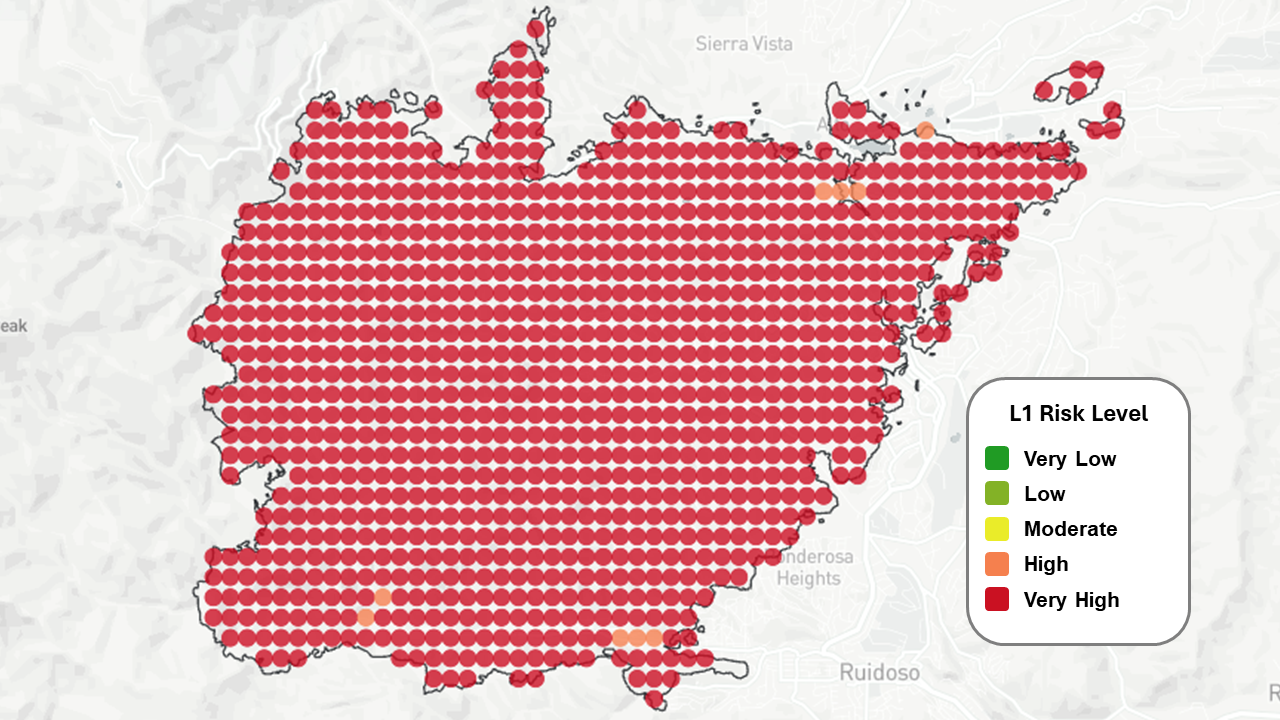
Residents of Ruidoso, New Mexico, received positive news this week as authorities lifted evacuation orders for thousands following the devastation caused by the South Fork and Salt fires. While a significant portion of the community remains inaccessible, this development marks a crucial step in recovery.
As of June 27th, the South Fork Fire is 69% contained and has burned over 17,000 acres. The Salt Fire, at 66% containment, has consumed nearly 8,000 acres. Over 1,100 firefighters from various states are battling the blazes. Tragically, these wildfires have resulted in at least two confirmed fatalities and the destruction of over 1,400 structures.
New Mexico Identified as High-Risk State in ZestyAI’s 2024 Wildfire Season Overview

Earlier this year, our May research study, "2024 Wildfire Season Overview: Not Just a California Problem," identified New Mexico as a state with concerning wildfire conditions. Alongside Arizona, Northern Idaho, and Western Montana, the report highlighted these regions as areas susceptible to significant wildfires in 2024, particularly in the absence of substantial precipitation to alleviate existing drought conditions.
(Figure: UNL U.S. Drought Monitor for New Mexico, April 16 2024)
Z-FIRE: A Tool for Proactive Wildfire Risk Management
Wildfire risk assessment solutions like Z-FIRE can empower insurance carriers and property owners to mitigate potential losses. Z-FIRE leverages artificial intelligence to predict wildfire risk at both the neighborhood and individual property levels across the United States. Z-FIRE is trained on a national dataset and delivers risk scores for all residential and commercial properties across the contiguous US. It offers a multi-layered approach:
- Level 1 Score: (L1) Neighborhood Score: Predicts the likelihood of a property being located within a wildfire perimeter over the next year.
- Level 2 Score: (L2) Property-Specific Score: Conditional probability of a property sustaining damage if included within a wildfire perimeter.
- Risk Factor Analysis: Provides insights into the key drivers influencing both L1 and L2 scores.
Z-FIRE Analysis of the South Fork Fire Perimeter
We applied Z-FIRE to the South Fork Fire perimeter to assess the effectiveness of the risk scores in predicting fire risk within that region. We used the fire perimeter as of June 18th; note that these analytics will change as the fire perimeter changes and the fire becomes fully contained. We will do a full assessment as part of our 2024 Z-FIRE performance memo, analyzing model performance across all fires and all states.
L1 Reveals High Risk
The L1 scores indicated a very high risk of properties being included within a wildfire perimeter. Notably, 100% of properties within the fire zone were classified as High or Very High risk, compared to only 8% of properties nationwide. This information is crucial for insurance carriers and property owners to implement appropriate mitigation strategies.
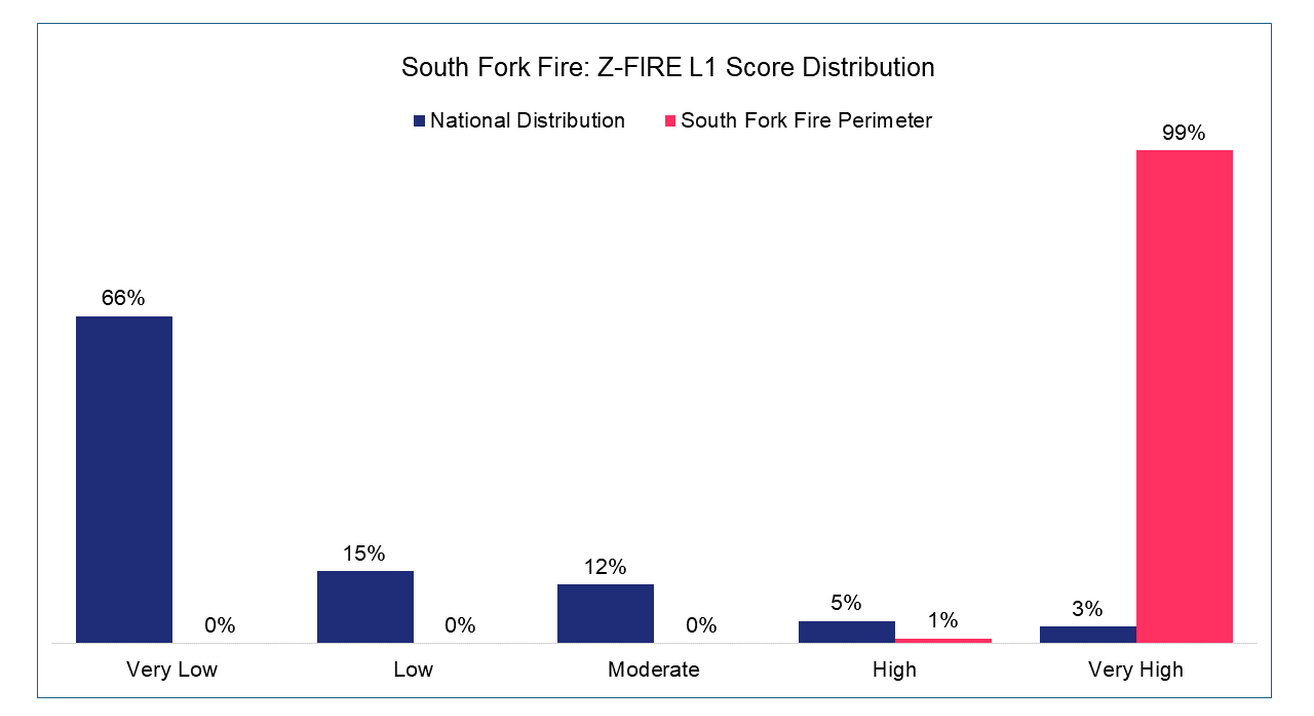
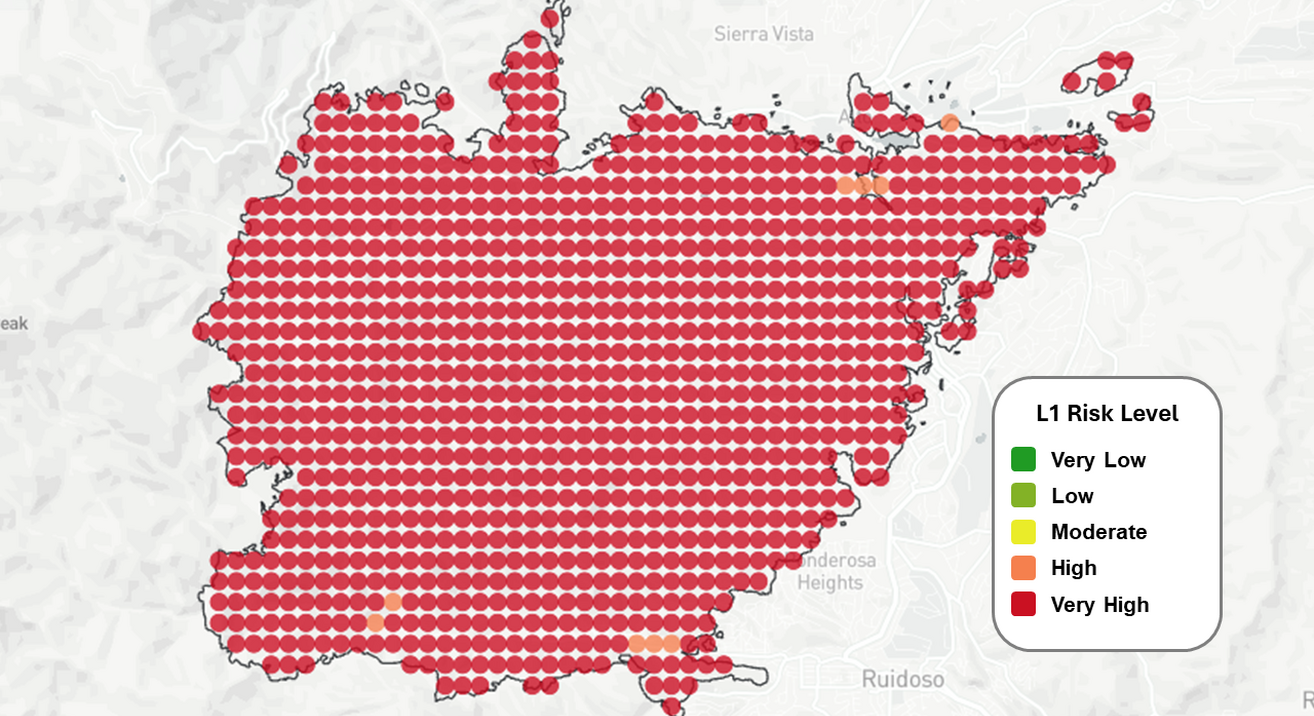
L2 Highlights Property-Specific Vulnerability
Property-specific characteristics significantly influence a structure's vulnerability during a wildfire event, even within the same neighborhood. While the entire South Fork Fire area exhibited high wildfire risk, mitigation efforts undertaken by property owners can significantly impact a structure's ability to withstand a wildfire.
The Z-FIRE L2 score quantifies this conditional risk, predicting the likelihood of a property being destroyed when exposed to a wildfire. The analysis revealed that approximately two-thirds of properties were classified as High or Very High risk for destruction, while the remaining third fell within the Low or Moderate risk categories.
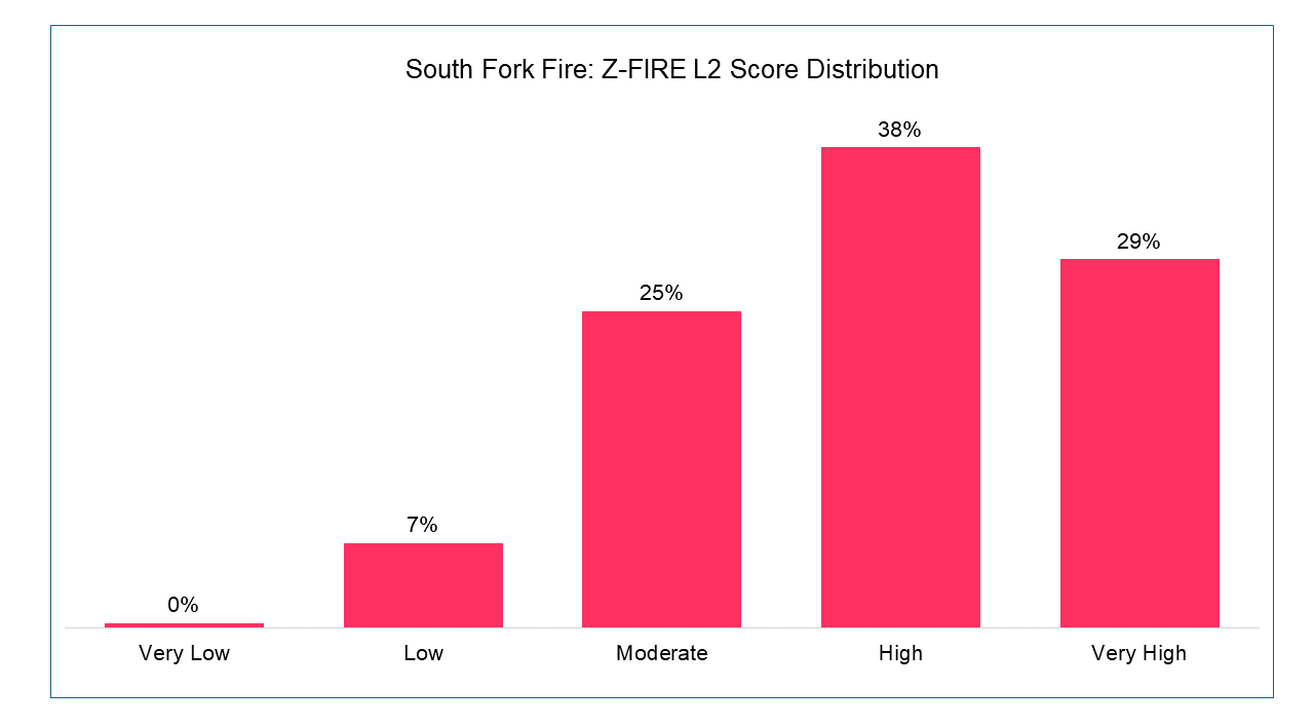
This variation in L2 scores underscores the importance of property-specific characteristics, such as maintaining defensible space and using appropriate roofing materials. Z-FIRE effectively highlights these variations, providing valuable insights for insurance carriers to collaborate with policyholders on implementing mitigation measures. After the fire is contained, we’ll analyze L2 score performance in predicting which structures survived as part of our 2024 Z-FIRE performance memo.
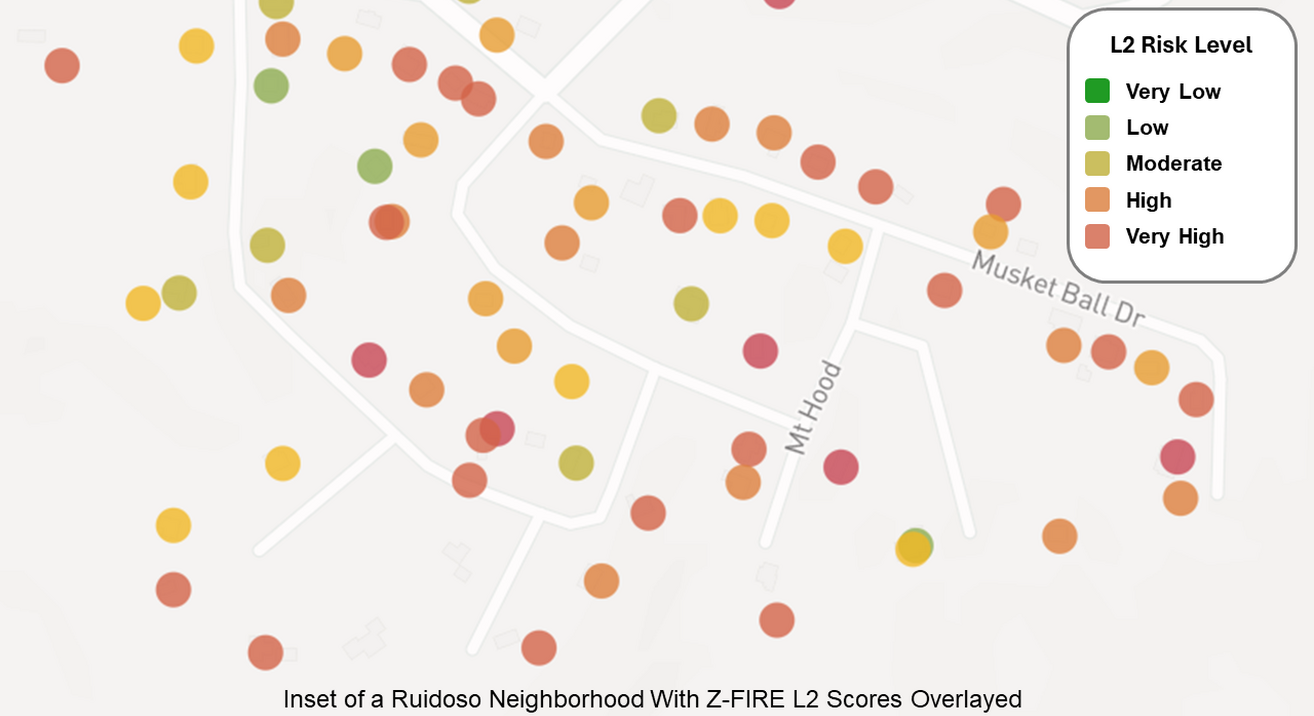
A Collaborative Approach to Wildfire Mitigation
Our research, conducted in partnership with the IBHS, confirms that fuel reduction efforts around a property can double its likelihood of surviving a wildfire event. This highlights the necessity of a multi-faceted approach that incorporates both property-level and community-wide mitigation strategies. For a deeper dive into this topic, we encourage you to explore our full research study, "Wildfire Fuel Management and Risk Management," alongside the 2024 Wildfire Season Overview.
Note: The Ruidoso fires is a rapidly changing situation. Numbers and analysis will change.









